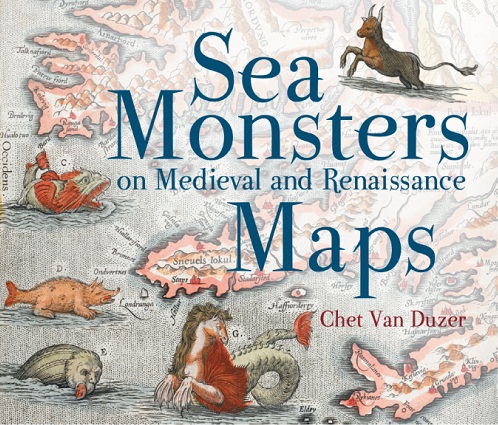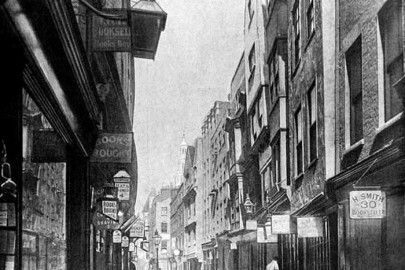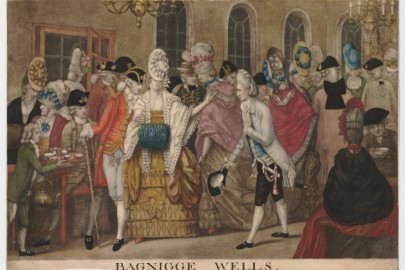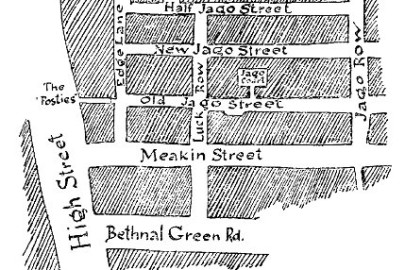We’re delighted to welcome Dabbler legend Jonathon Green back to the site, with the first in an occasional series of reviews of current non-fiction…
Geography Of The Marvellous
Chet van Duzer – Sea Monsters on Medieval & Renaissance Maps
128 pp. British Library £20
This great and wide sea, wherein are things creeping innumerable, both small and great beasts.
Psalm 104
We know everything now. Little gods, with all creation at our finger-tips (or riding Google’s servers) we seem omnipotent, our fantasies and fictions restrained to the vapid banalities of Young Adult fiction. If, to use a defunct image, we surf the net, then we have an ever-improving knowledge of what lies beneath the real waves as well as the figurative ones. Our ancestors, tied to earlier technologies, lived otherwise. The world was small, the oceans vast. The map, in every sense, soon blurred. The legend offered its twin meanings: factual notes, fantastical creatures. Here Be Monsters.
The monster is defined by the OED as ‘a mythical creature which is part animal and part human, or combines elements of two or more animal forms, and is frequently of great size and ferocious appearance.’ It does not specify the sea variety, specimens of which regular populate the depictions of the sea as found in medieval and renaissance maps, up to the 16th century. Mr Van Duzer, a leading historian of historical cartography, has it thus: ‘an aquatic creature that was thought astonishing and exotic (regardless in fact of whether it was real or mythical)’. His book, on which every page offers an illustration (and he should not mind that, for all his skilful exposition, this has to be the work’s primary appeal for the lay reader), lays out the stall.
Monsters terrifying, monsters anthropomorphic, monsters conjured from the imagination, monsters approaching something real, and even monsters whimsical.
Spikes are important. Teeth too. The gaping mouth: all the better to engulf you. Resist the ‘island: it is a whale and when, as you do, you disembark to light a warming fire in the ocean’s chilly midst, Leviathan awakens and you will soon be plunged into its depths.
The orca, the murex, the siren, the aloes, the hoge, the leviathan, the merman (though seemingly not the mermaid), the ichthyocentaur. And since it was laid down by Pliny and others that whatever existed on land must, at least from the navel upwards, exist in the deeps, a whole list of hybrids. Mr van Duzer indexes 26, including a sea bear, bull, chicken, cow, elephant, goat, panther, pig, rabbit stag, tiger and unicorn. Note also the sea bishop and sea monk.
This ‘geography of the marvelous’ appeared on two varieties of map: the mappaemundi (world maps which aimed for a global overview, but had little geographical verity) and portolan or nautical charts which were used at sea and might also be blown up and custom-illustrated for wealthy patrons. Decoration was optional: you paid for your monsters and if you didn’t pay, then empty oceans. If you did pay, as did King Manuel of Portugal, you could be found riding a whale with saddle and bridle, brandishing a national flag, sceptre and cross.
Mr van Duzer’s scholarship is comprehensive (and original – this is not a topic hitherto attempted and this review can do more than paraphrase his findings) but as he accepts, our knowledge remains inconsistent. Some maps have monsters, others not. There seems no hard-and-fast line of development. There may be elaborate illustrations but nary a monster. Or vice versa. Only once is the absence explained: , in Fra Mauro’s mappamundi of c1450 its creator simply states his scepticism of such lurid phenomena.
Printing changed the game: the purpose-built / pay-for-play monsters disappeared but the monster survived as part of the map’s commercial appeal. Again, some commercial maps have them, some not, ‘and we do not know why’. Sometimes, as in Martin Waldseemuller’s work, there are legends mentioning monsters but no pictures; alternatively he gives wondrous illustrations, but no explanatory text.
The monster is not, suggests Mr van Duzer, just a pretty (?) face. It serves to underpin existing writings on strange species (though there do not seem to be any attempts to reproduce creatures as described in contemporary books of natural history); its decorative elements both point up the dangers of the sea and celebrate its glorious fecundity and offer a pious acknowledgement of God’s bounty as delineated in the Creation. Finally they show off the cartographer’s artistic skills. Sometimes, it is suggested, monster-filled maps were created deliberately: to scare off commercial competitors, as in a 1539 map of the waters around Scandinavia aimed to discourage rival fishermen.
This threat factor carried a paradox: ‘here be monsters’ (a phrase that in fact was never used) indicated areas least well known and thus most demanding of exploration. It also suggested that they were most potentially dangerous and thus to be avoided, though this perhaps served to aggrandize their eventual explorers.
Finally, their inclusion reflected a general fascination with wonders and marvels. If they lacked verity, no matter; if anything that was the greater stimulus: the more exotic the better, so as to exercise the mind.
Modern exploration is mainly via our keyboards: input ‘ocean maps online’ and there appear 146 million hits. No monsters there, but the myth is pervasive. Captain Nemo’s giant squid, Moby Dick, Jaws, the Kraken, Gozilla and various pals. Even land-girt Nessie. None, sadly, will appear on our maps.













Love this kind of thing!
philistine question: Are there lots of pictures in this book, or is it more of an academic wordy thing?